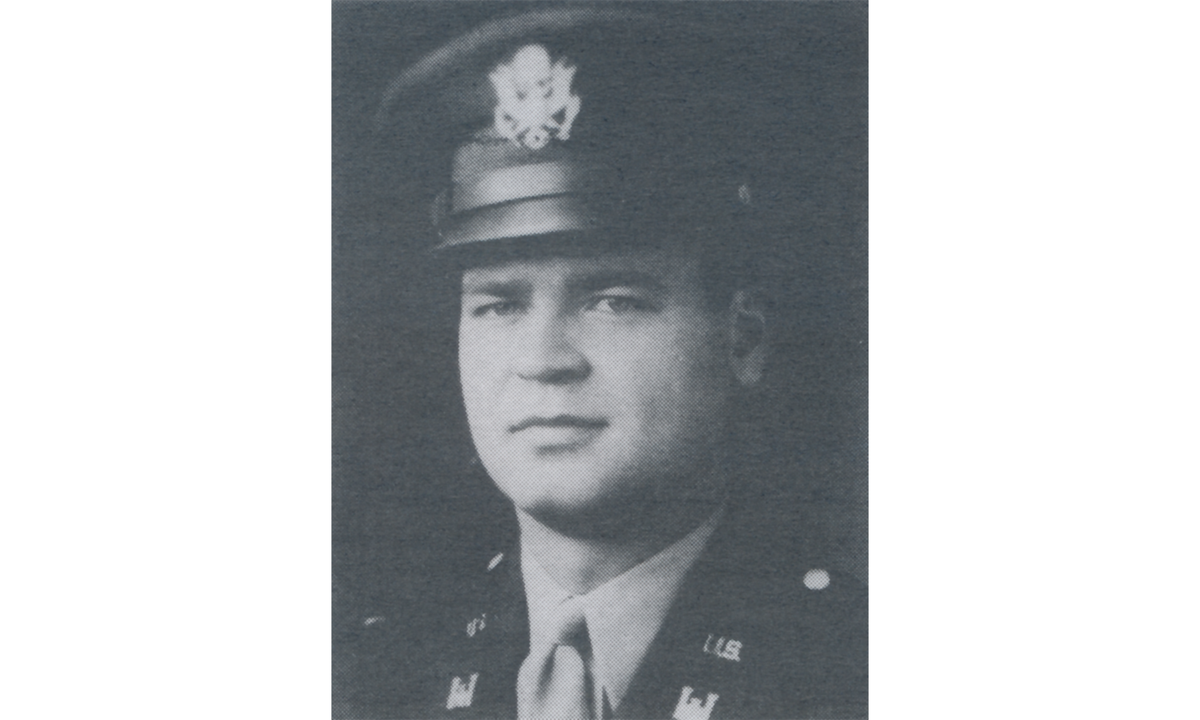Local Legends: Oxford's 'Sergeant York'
The nation remembered the 80th anniversary of D-Day this summer. Second Lieutenant Richard A. Kersting of Oxford landed on Omaha beach days after the battle and died in combat later in the summer of 1944.

On June 6, 2024, the nation remembered the 80th anniversary of D-Day, likely the final decennial commemoration in which living veterans of the battle would still be alive.
However, the events not only focused on the few remaining World War II veterans, but also those who gave their lives on the beaches, and in the landing zones, towns and hedgerows of Normandy. Second Lieutenant Richard A. Kersting was one such hero.
Born on August 2, 1921 in Ottawa, Ohio, Kersting moved to Oxford in 1932 with his parents, Alphonse A. and Mary (Frey) Kersting. Kersting’s mother and father had both previously lived in Oxford while attending Western College and Miami University, respectively.
Highly educated and an excellent athlete, Kersting attended Ohio State University and Dartmouth College after graduating from McGuffey High School at age 15.
During the summers, Kersting worked in the defense industry, employed by Wright Aeronautical Corporation in Lockland and ARMCO in Middletown.
Kersting graduated from Dartmouth in the Class of 1942 and immediately enlisted in the Army Air Force as a private first class and was assigned to a ground crew. In desperate need of officers, the Army selected Kersting to go to Officer Candidate School at Ft. Belvoir, Virginia and he was commissioned a second lieutenant in the Army Corps of Engineers in March 1943.
He returned to Oxford for the last time on leave the following month. Around this time, Kersting got engaged to Miss Joan Clay, who worked in New York City with one of his sisters.
Assigned to the 246th Engineer Combat Battalion, primarily a bridging unit, Kersting shipped out for England in July 1943 and began training for the coming invasion.
Along with his unit, Kersting landed on Omaha Beach on D+5, June 11, 1944. However, it wasn’t until the night of June 14-15 that they first entered combat, constructing Bailey Bridges under cover of darkness to avoid German artillery fire.
Attached to the 30th Infantry Division, the engineers of the 246th battled their way through the hedgerows of the Bocage, supporting the infantry by building roads and bridges, clearing minefields, and destroying German pillboxes.
The Normandy Campaign came to a devastating climax at the crossroads commune of Saint-Lô. It was during the drive on Saint-Lô that Kersting would distinguish himself.
On July 11, Kersting and one of his men were reconnoitering on foot, looking for mines, when they encountered an American tank crew who asked them to guide them into a nearby town. The pair advanced forward and was immediately fired upon by a damaged German panzer. Kersting pinned down the panzer’s crew while simultaneously directing a bazooka team to destroy the tank.
Taking his first prisoner in the process, Kersting later said, “I worked him over a little and got him to tell the whereabouts of the others.”
Kersting identified two houses being used as strongpoints by the Germans and used the tank to reduce the first house to rubble.
As Kersting braved enemy fire to single handedly assault the second house, a German emerged and pointed his weapon at Kersting. Kersting dispatched the soldat, kicked in the door of the house and took 30 German prisoners. Ten other enemies were left dead on the field.
Newspaper articles and radio interviews followed, calling Kersting the new “Sergeant York.”
However, Kersting’s war wasn’t over, and he returned to combat. Two weeks later, on July 26, Kersting was killed in action after being shot in the back.
Soon after his mother was notified of his death, she also received his last letter, which he closed with “War is the most horrible trial of life.” She accepted her son’s Distinguished Service Cross for “extraordinary heroism” in May 1945.
Second Lieutenant Richard A. Kersting rests beneath a white cross in the Normandy American Cemetery, beside 9,388 of his comrades who gave their lives to liberate Europe from Nazi tyranny.
Brad Spurlock is the manager of the Smith Library of Regional History and Cummins Local History Room, Lane Libraries. A certified archivist, Brad has over a decade of experience working with local history, maintaining archival collections and collaborating on community history projects.



